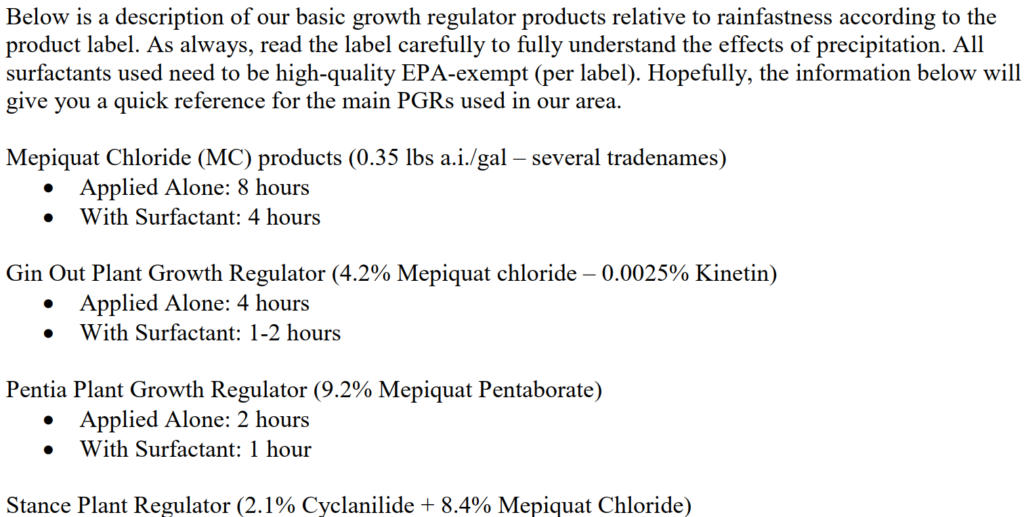Peanut White Mold
1) Timely fungicide applications of effective fungicides at appropriate rates. 2) Try to time the fungicide application so that the field receives rainfall or irrigation within 24 hours. 3) Recognize that no fungicide program will eliminate white mold from a field. But an effective fungicide program must contain the white mold. – Kemerait.




Worms in Peanut
Worms are showing up in some fields. Velvet bean caterpillars and loopers have been found. Threshold is 4-8 worms/foot. Lower threshold (4) for younger, smaller or stressed plants and higher (8) threshold for older, larger, healthier plants. Diflubenzuron (dimilin) works well on velvet bean caterpillars but not on loopers.
Rainfastness of Cotton PGR Products – Wade Parker


Southern Corn Rust
Southern corn rust was found in Cook Co Monday (8/7). Corn at hard-dough R5 stage (nearly all kernels are dented) and beyond is safe. Later planted corn is not.

